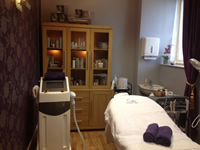Tattoo removal
Q- Switched ND Yag laser Tattoo removal is the latest technique with best result.
Additionally, although Q-switched lasers are considered the gold standard for tattoo removal, realistic expectations should be established. Patients interested in treatment must be informed at the outset that complete clearance is not guaranteed and that the number of treatments and end result depend on factors that vary from patient to patientIt takes between 3-12 sessions .,
Each session between 4 week.
Tattoo must 6 weeks old.
Blistering
Blistering can occur as a result of overaggressive laser treatment or inadvertent absorption of laser energy due to the specific pigment. Blisters may be avoided by using a tissue-cooling system, such as a contact chill tip or cryogen spray.4 To avoid adverse effects such as wheals, punctate bleeding, blisters, and crusts, a minimum of four weeks between sessions should be maintained. Topical antiseptics can be used to prevent infection.6
Allergic Reactions
Tattoos containing metal salts—mercury (red), cadmium (yellow), chrome (green), or cobalt (blue)—may be subject to a local allergic or photoallergic skin reaction.6 A preexisting local allergic reaction may be exacerbated by laser treatment, resulting in urticaria or a systemic allergic reaction. The tattoo should be treated with corticosteroids and an allergist consulted.1 Some providers recommend avoiding laser therapy altogether.
Red is the pigment most often associated with allergic reactions, resulting in nodular, scaly, pruritic areas.12 Removal of areas of red pigment with the 532-nm Nd:YAG laser can help prevent complications.9 Photoallergic reactions most commonly involve cadmium. Affected patients typically report a history of pruritus in the tattoo and raised skin after UV exposure.
Allergic reactions can also be treated with topical or intralesional corticosteroids.12
Scarring
Cobblestone texture is a sign of early scarring, usually appearing within two weeks of treatment. The risk for scarring is highest on the chest, outer upper arm, and ankle.1
The risk is especially great in laser treatment of areas that have been retattooed (ie, a second tattoo applied to cover an older tattoo) because of the high density of pigment and increased laser resistance.9 Patients should be asked about the possible presence of a cover-up tattoo, since this may not be detectable on casual inspection.
€30 per inch per session
